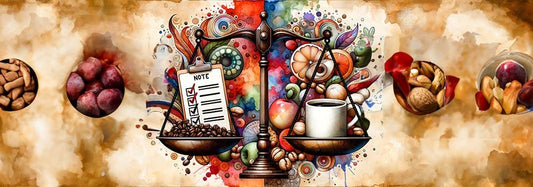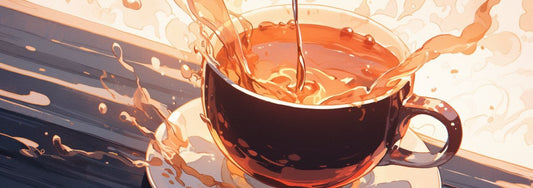Coffee, a simple yet complex beverage, is a canvas where temperature paints its intricate details, influencing every sip from bean storage to the final brew. Let’s delve into the thermal journey of coffee, exploring how temperature can be both an artist and a scientist in crafting your cup.
Storage matters
Heat vs. Coffee Beans
Coffee beans, the seeds of the Coffea plant, are packed with flavors and aromas that are highly sensitive to their storage environment. Heat accelerates the aging of beans, causing them to lose their vibrant flavors and aromas prematurely. Storing them away from heat ensures the preservation of their intrinsic qualities, offering you a fresher, more flavorful brew.
In regions like Hong Kong and Southeast Asia, where heat and humidity dominate, refrigeration might seem like a viable option for coffee storage. However, when beans are exposed to the ambient air after refrigeration, they instantly attract moisture, leading to potential mold growth and flavor degradation. Thus, a cool, dry place away from direct sunlight becomes the ideal storage spot.
The Brewing Chemistry
When hot water meets coffee grounds, a series of chemical reactions unfold, extracting flavors, aromas, and oils from the beans. The heat acts as a catalyst, enabling the solubles in coffee to dissolve efficiently, creating a brew that’s rich and flavorful. These compounds include oils, acids, sugars, and proteins, each of which extracts at different rates and is influenced by the water temperature.
For instance, higher temperatures, typically around 90°C to 96°C, facilitate the extraction of soluble compounds that contribute to both the delightful and undesirable flavors in coffee. While it aids in extracting the pleasant, aromatic, and sweet compounds, it also risks over-extracting the bitter and astringent compounds if the water is too hot or the brew time is too long.
Conversely, brewing with water that's too cool, below 88°C, might not extract enough of the flavorful compounds, leading to an under-extracted brew that can taste sour due to the rapid extraction of chlorogenic acid. This acid is one of the first compounds to be extracted and is responsible for the sour flavor in under-extracted or cool-brewed coffee.
Following curve show the coffee brewing cycle and those elements extracted. The hotter the water pour, the faster is the reaction.

Why we suggest to wait a bit after boiling?
Brewing with boiling water (100°C) can over-extract the coffee, leading to a bitter and harsh flavor profile. On the flip side, a slightly lower temperature, typically between 90°C to 96°C, ensures a balanced extraction, allowing the subtle flavors and aromas to shine through without being overshadowed by bitterness.
However, we are not used to use thermometer or brew with smart kettle with precision temperature and pouring control. We always encourage relax brewing. Wat for 30sec-60sec would be good enough to coll down boiled water. To go next level, we would introduce precise temperature brewing later.
Preheat coffee mug
As coffee is so sensitive to temperature. Flavor would immediately change when temperature change. That’s why Preheating your mug is not merely a ritual but a technique to maintain the brewing temperature. A warm mug ensures that the coffee retains its intended temperature and flavor profile, offering you a consistently delightful experience from the first sip to the last.
Hot not always good
Tasting your brew immediately after brewing and then after a few minutes reveals a fascinating shift in flavors. As coffee cools slightly, the acidity often becomes more pronounced, unveiling a spectrum of fruity and sour notes that were subdued in the piping hot brew.
You could also try sip cool water after hot coffee, it not only refreshes your palate but also alters the subsequent coffee tasting experience. It’s like a magical flavor journey where the contrasts between cool water and warm coffee create a symphony of evolving tastes.
Taste cold brew
Exploring cold brewing methods like iced filter coffee, ice drip, and cold brew unveils a different dimension of coffee, where the slow extraction at lower temperatures highlights sweet, smooth, and unique flavor profiles, offering a refreshing alternative to hot brews. Let’s explore how cold brew or ice drip brewing works later.
Brewing coffee is an enchanting blend of science and leisure. Whether you meticulously monitor temperatures with a thermometer or simply allow the water to cool naturally, the essence is in enjoying the process and the resulting cup. At Fasan Coffee, we celebrate this spirit of exploration and enjoyment in brewing. We invite you to embark on this delightful journey with us, exploring, learning, and growing together in the magnificent world of coffee.




